
Photography Courtesy of Aptera

It looks something like a spaceship or a Star Wars X-wing, but these days, it seems like everything “green” does. Aptera founder Steve Fambro invites the ready, willing, and able (and shorter than 6′5″) to board the Aptera Typ-1, a car that allegedly gets 230 miles to the gallon. Fambro’s theory is that a car with minimal drag and an aerodynamic shape would cut down on those fuel bills, but it can be designed to be comfortable, safe, and user-friendly. Manufacturing for the car — which will tentatively cost nearly $27,000 for an electric-only version, and nearly $30,000 for a plug-in hybrid — starts at the end of this year. Something to keep in mind: anything more than two people and a baby could become a problem.
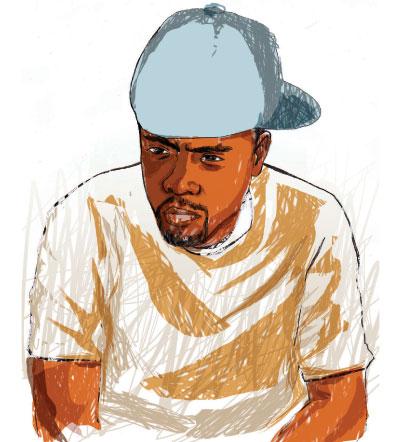
Illustration by Peter Nguyen

For the average person the term “go-go” conjures up images of miniskirts and pole dancing. In Washington, D.C., however, the term immediately brings to mind the striking chords of ’70s funk, heavy percussion, and all the bouncy grooves that laid the groundwork for the city’s hip-hop past and present. Sitting at the forefront of D.C.’s old-school re-evolution is the exuberant Wale (pronounced “wah-lay”), whose dynamic lyricism and confident sound are drenched with the capital’s legendary musical history. After signing a production deal with Mark Ronson’s Allido Records, Wale has become recognized as an innovator in the hip-hop community, his stylish wordplay backed by the signature go-go of godfathers like the Backyard Band and Chuck Brown. “I’m just hoping to bring [go-go music] to the forefront,” he says. His latest effort, 100 Miles and Running, should do just that, with tracks produced by Best Kept Secret, Judah, and, of course, Mr. Ronson himself. Whether he’s discussing his disparate musical influences (“Let’s Ride”), recounting funny drug stories (“Warming Up Cane”), or collaborating with the “other” Parisian duo (“W.A.L.E.D.A.N.C.E.”), Wale finds a way to tie it all together. “I just listen to a lot of music,” he says. “I mean, everyone from Simon and Garfunkel to the Monkees to Bob Marley to the Beatles.” He even has aspirations to work with British wunderkind James Morrison. With one ear for the past and another for the present, Wale — along with the whole go-go revival — seems more ready to step up to the limelight.
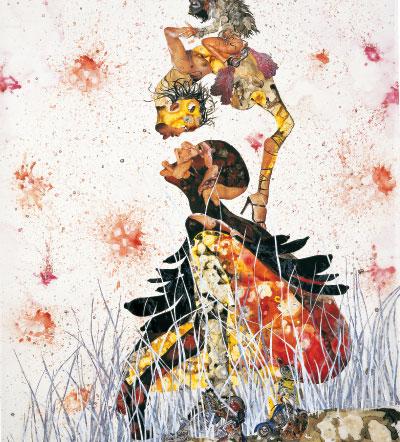

“Astonish Me!” commanded Sergei Diaghilev, arbiter of taste and founder of the Ballet Russes in Paris in the early 20th Century, to his gathering of composers, dancers, writers, and artists — which included such luminaries as Nijinsky, Stravinsky, Cocteau, Apollinaire, and Picasso among many others. It became the defining dictum for art in the 20th Century, infusing Dadaism, Surrealism, Cubism and onward with a simple, clear directive to make art that stunned. For me, it’s the benchmark I always hold in mind when viewing new work. Does it stop me in my tracks and seize me – emotionally? aesthetically? Does it reach out and shake me from my bland existence? Unfortunately, in today’s oversaturated art market, where crude, rudimentary craft-making seems to rule the day, the answer more often than not is “No”. But not even a resounding no; I’ve become so resigned to bad art at this point it’s more like a wimper of a no as I leave the gallery or museum uninspired, and often despondent (this year’s Whitney Biennial). Wangechi Mutu, on the other hand… she is a resounding “Yes!” A breathtaking, entirely unexpected fusion of Klee, Klimt, and Schiele, Mutu’s art is polemical, lyrical, and disturbing at once. PLANET° first wrote about Mutu in 2004 in a long profile and was one of the earliest magazines to notice and champion her work.
(more…)

Everything about this East Hollywood neighborhood eatery is diminutive: the ingredient-focused menu, the ten-seat bar, and even the physical layout. But this only adds to the comfort and sophistication. In fact, Little Dom’s delivers high on class with old-world charm, with a décor of stained-glass windows, pinewood floors, parochial green booths in the bar area and classic rounded, red booths in the main dinning room. The menu flourishes on the simple approach of local and seasonal ingredients turned Italian. For starters, try the rice balls or the tuna crudo with Meyer lemon pesto and giant lima beans. Main courses like the whitefish picatta and the grilled hangar steak with spinach and crispy mushrooms deliver on taste while the wine list praises Italian regions. For all its simplicity, it’s still a scene, and LA scenesters do flock here.
2128 Hillhurst Avenue +323 661 0055
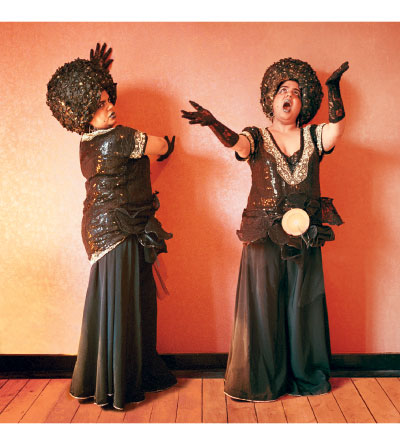

In 1980s-New York, players like Keith Haring, Jean-Michel Basquiat, and Robert Mapplethorpe revolutionized the art scene. Today something similar is happening in India, where a new generation of artists is creating work that challenges cultural taboos on feminism, homosexuality, and class mobility. Rooted in Indian culture, using references that run from the Bhagavad Gita to Bollywood, these “New Wave” Indian artists are producing art that’s bold, bright, and refreshingly in-your-face.
The fourteen artists profiled in New Delhi, New Wave (Damiani) have been carefully picked to represent the new generation. Some of them are friends, two are married to each other, but each body of work is completely separate and original. A lot of the work deals with sexuality, from the condom-embossed articles of clothing made by twentysomething designer/artists Thukral & Tagra to Tejal Shah’s gender-bending photographs of transvestites as female sex goddesses and divas. Video artist Sonia Khurana uses her large, voluptuous body to counter India’s dependence on Western ideals of beauty, while Kriti Arora’s huge photographs of humble road-builders make us confront a social underclass that’s usually hidden.
(more…)
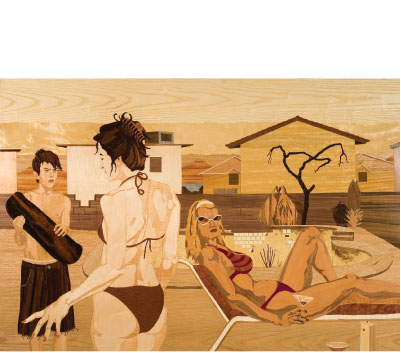
Artwork Courtesy of the Artist & the James Cohan Gallery

“It’s a tradition to escape by going West,” says Alison Elizabeth Taylor, referring to the wide-open spaces that beckon America’s freedom seekers. Since Taylor went the opposite direction, from Los Angeles to New York City, to attend Columbia University’s MFA program in 2003, her artwork has been intensely preoccupied with the West she left behind. “I grew up hating the desert,” she says about her years in Las Vegas. “I thought it was so oppressive. I felt like it made everything in the real world so much farther away from me, but I don’t feel that way now.”
Taylor’s work tells stories about individuals who have struck a bargain with the desert — freedom for isolation, she calls it — and gladly agree to its terms. In her latest series, she pays homage to this American brand of misfit, using a technique called marquetry, or wood inlay, that employs different grains of wood sanded down to a regal sheen. Against an arid, barren backdrop of varying shades of brown, the inevitable collision between Utopia and reality plays out. In Taylor’s art, big-box stores and subdivisions multiply exponentially, and dirt roads turn into four-lane highways — all signs of society’s unrelenting encroachment. As she does in all of her work, Taylor peels back the clean, shiny surface of the American Dream to give us a glimpse of the alienation, boredom, and violence that exist just underneath. Whether her subject matter involves a drunken confrontation, an accidental drowning, or a man on the run, she offers us just a hint of the narrative and lets our imaginations do the rest.
(more…)

Photography Courtesy of Diabless

“I don’t think that being a modern designer means being in front of the press,” says the usually reticent Chantal Hagège, fashion garbo behind the Diabless fashion line. The irony’s considerable. In Hagège’s case, it’s her would-be “silent partners” who do all the talking. Having worked independently in fashion for some two decades, not without success, Hagège and her highly impressive designs only became Diabless after receiving significant financial backing from the CEOs of Today’s Man and Fairchild Corporation. The resulting equation, Diabless, was a dream come true by any designer’s measure: total creative control with nil responsibility for marketing, visual merchandising, etc. Yet Hagège remains removed from the glitz. “I strongly believe my designs will be interesting for themselves without my promoting them in interviews and putting my face and views with the designs.
(more…)
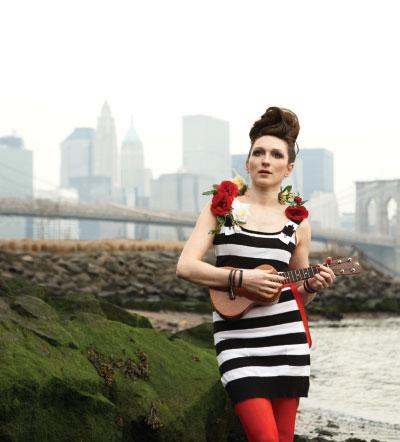
Photography by Alexander Wagner

“If you like Björk as much as Boulez. If you’re a Britton fan, call me,” implored the Craigslist ad that, in 2006, eventually fleshed out the string section of My Brightest Diamond. Until then, founder Shara Worden straddled two musical worlds: New York’s avant-garde indie music scene and that of her freshly earned University of North Texas opera degree. “I distinctly remember this summer when I’d really pushed for certain operatic auditions and didn’t get in, and I was kind of like, ‘You know what, I’m going to take this as a sign of what my destiny is supposed to be here,’” Worden says. She continued her music education informally and eclectically by studying composition with Australian composer Padma Newsome (of The National), playing in a band called Awry, and going out on tour as the head cheerleader of Sufjan Stevens’ Illinoismakers. “If you have these little creative releases of energy or alternate ideas, it creates a fertile ground for your primary project,” she elaborates. In Worden’s case, all that cultivated fertility led her to form My Brightest Diamond.
Audio clip: Adobe Flash Player (version 9 or above) is required to play this audio clip. Download the latest version here. You also need to have JavaScript enabled in your browser.
(more…)
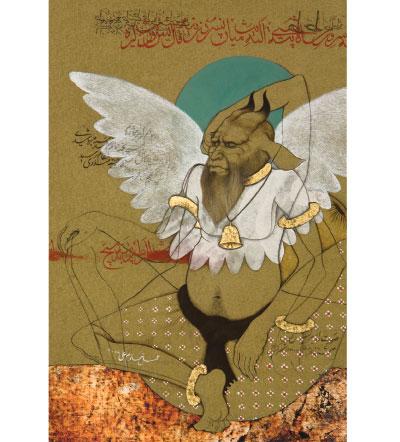
All images Untitled, Courtesy Green Cartamom and the artist

The old proverb that a picture’s worth a thousand words
is probably never more beautifully illustrated than in the works of classical Persian poetry. The stories told with both crafts — poetry and painting — from their inception over a thousand years ago to the present day serve as a common consciousness for Farsi speakers in Iran and beyond. Completed by the poet Ferdowsi in 1010 AD, The Shahnameh (often referred to as The Persian Book of Kings in the West) tells the mythical and historical past of Iran from its Zoroastrian genesis 6,000 years ago up until the Islamic conquest of Iran in the 7th century AD.
Roughly seven times the length of Homer’s Iliad, most of the abridged English translations of The Shahnameh focus on the allegorical tragedy of the hero Rustam killing his son Sohrab — whom he had never met — by accident in battle. Though elegantly written like the divans (works) of other Persian poets Hafez, Saadi, Rumi, and Omar Khayyam, whereas their works encouraged transcendent sublimation through love, drink, and dance, Ferdowsi intended The Shahnameh as an antidote toward any apathy of the past so as not to make the same mistakes in the present or the future. The book’s sheer popularity cemented the Farsi language in even the remotest stretches of the ancient Persian Empire, from northern India to the Persian Gulf.
(more…)
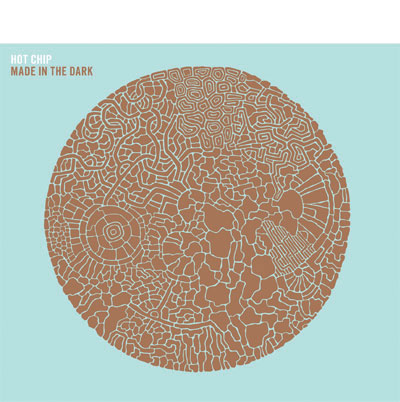
Astralwerks

With their third album, Hot Chip mature and end up sounding like…well, a lot like New Order. Lacking their trademark humor and bad fashion sense, the band abandon their trademark pop pastiche and leave it all for the dancefloor. It’s a risky move and could have failed miserably (nerds rapping about Escalades and rims was part of their appeal, after all). Yet Made in the Dark sounds very “now” — and completely unlike the toast of indie-electronica currently filling blogs everywhere (Dan Deacon, Justice, etc.). Erlend Oye may be the unquestionable king of white-boy electro-nerd stylings, but Alex Taylor is a close second, and when he slows the jams down Hot Chip may just be the ultimate basement makeout band. Made in the Dark is an album sure to be on everyone’s list this spring.
Audio clip: Adobe Flash Player (version 9 or above) is required to play this audio clip. Download the latest version here. You also need to have JavaScript enabled in your browser.





 Facebook
Facebook Permalink
Permalink Digg
Digg Reddit
Reddit LinkedIn
LinkedIn StumbleUpon
StumbleUpon Tumblr
Tumblr











